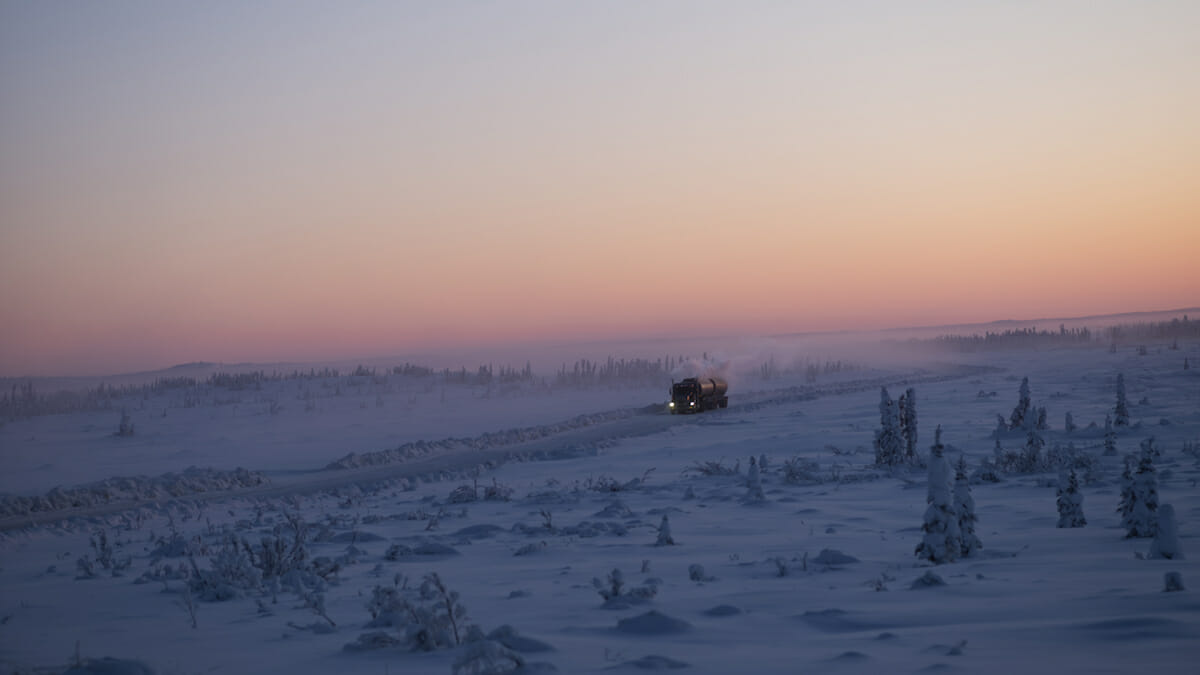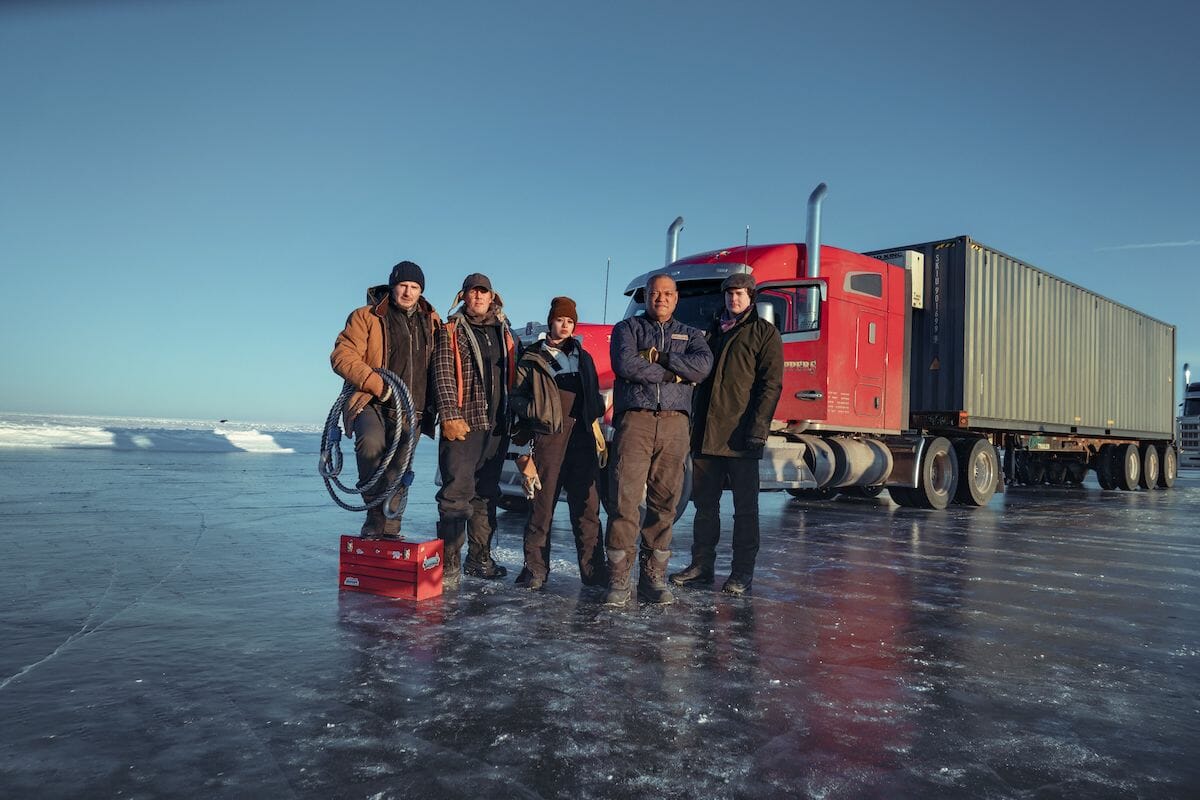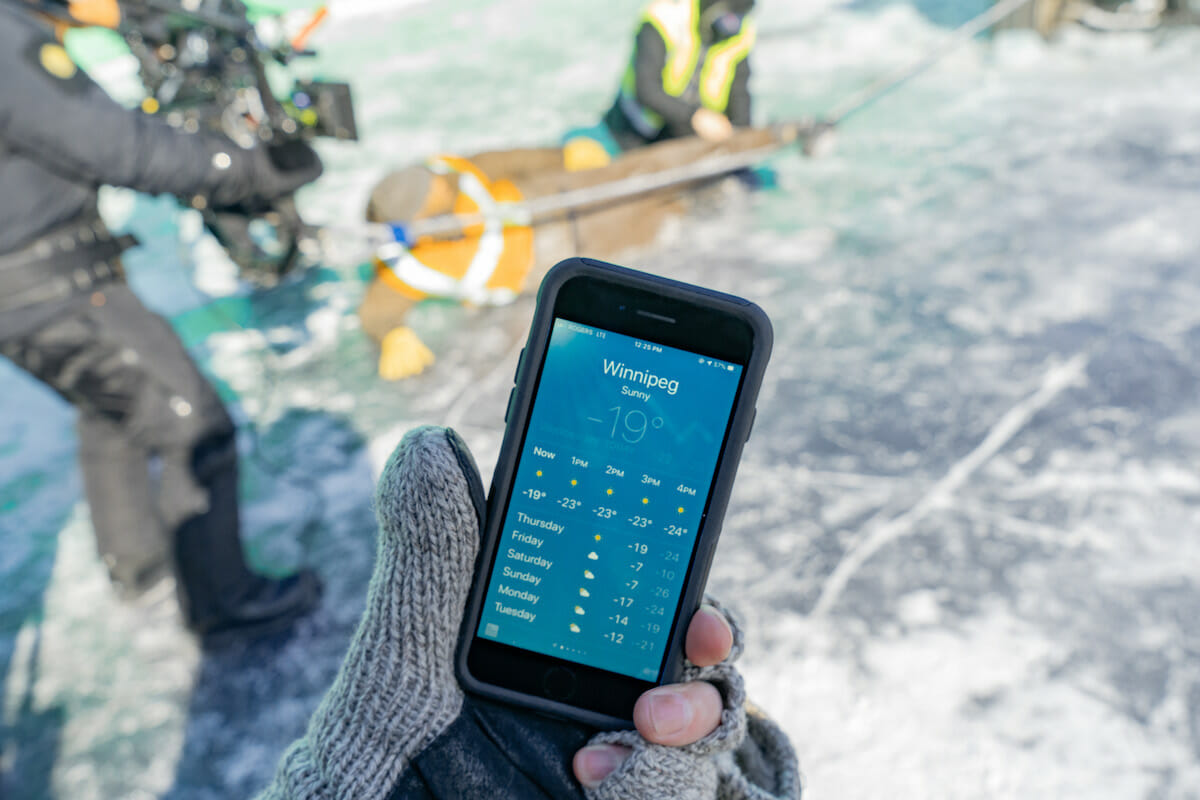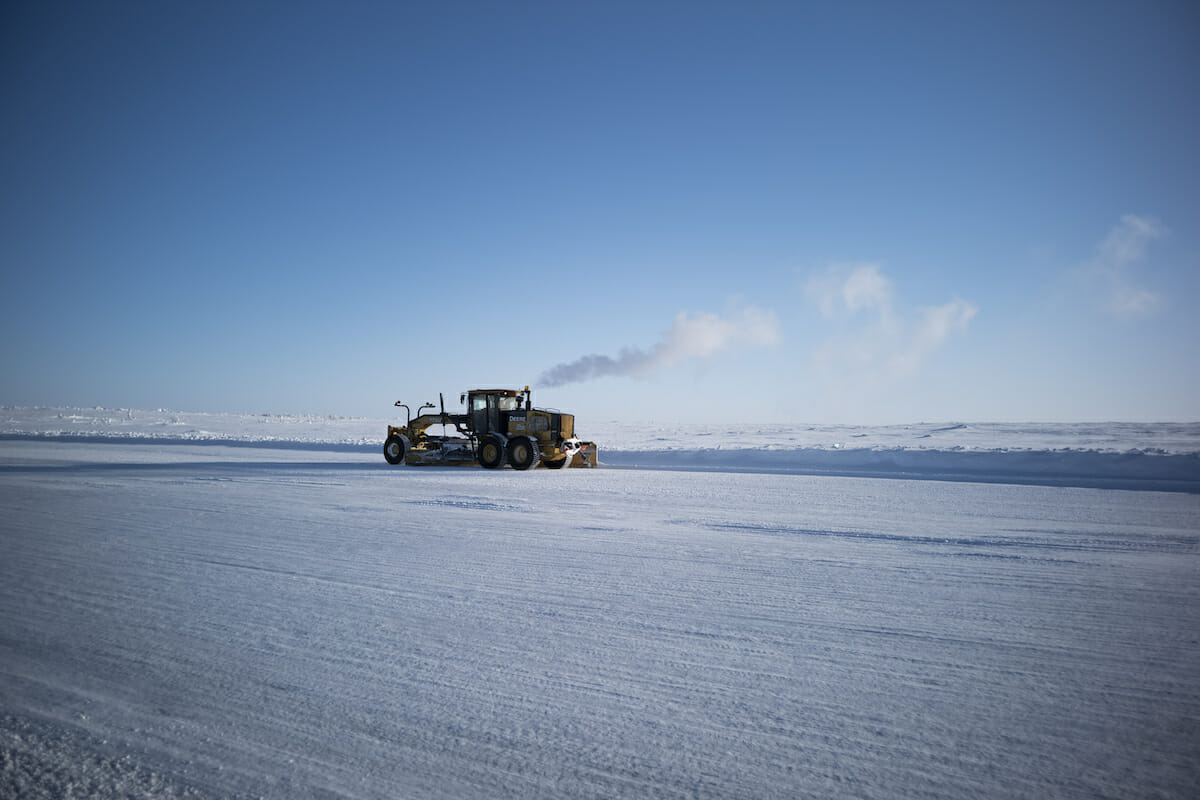The Real Story of Canada’s Diamond Ice Road Featured in the New Netflix Movie

Before you stream the movie, here’s everything you should know about the real “Ice Road” in Canada.

What is The Ice Road about?
In The Ice Road, Liam Neeson plays Mike, a truck driver hired to rescue diamond miners from a collapsed mine Canada’s Northwest Territories. Mike races the clock under frigid weather conditions in his attempt to complete his mission.
Read More: Destination Diamonds: Here’s Why You Should Visit Canada’s Northwest Territories
Is The Ice Road based on a true story?
While Canada’s ice road is real, the film’s storyline is pure fiction. Officially known as the Tibbitt to Contwoyto Winter Road, the road is open briefly every year (typically in February or March) and is used to re-supply operating diamond sites. No situations of a mine collapsing as depicted in The Ice Road have ever occurred in Canada’s diamond sites, and the ice is rigorously tested before the route is used to make sure the road is safe for travel and that trucks can not fall through cracked iced.
Watch Now: Ice Road on Netflix

Where is the real “Ice Road” located?
The ice road that inspired the movie is located in Canada’s Northwest Territories (NWT), a sprawling Arctic region which encompasses 40% of Canada’s landmass. Diamonds were discovered there in the late 1990s, and since then, Canada has become the world’s third largest producer of diamonds.
The road itself is 400km long (about 250 miles) and is primarily built over frozen lakes—64 of them! Measuring about 160 feet wide on ice, this renowned ice superhighway is a thing of beauty. The vast expanse of wilderness and pristine frozen lakes are a far cry from the I-95 corridor, and truck drivers making the 14-16 hour trip get to take it all in—the maximum speed limit is 15 mph. Every year, initial road construction begins in December.
Where was The Ice Road filmed?
The Ice Road was filmed largely in Winnipeg, Canada…far from Canada’s Northwest Territories and the diamonds hub.

Where are diamonds found in Canada?
There are currently three working diamond mines in the NWT—Ekati, Diavik and Gahcho Kué—but because they are located in the most remote region of the frozen NWT, the commute to work is extraordinary! The mining operations are cut-off from the outside world for all but two short months a year. It’s only during February and March that lakes along the route have frozen solid enough to connect the mines to the capital city of Yellowknife.
In the Northwest territories, the diamond industry is a vital one, contributing around 25% of the territory’s GDP, and the ice road is the lifeline which sustains it. Up to 10,000 loads of essential supplies and equipment are delivered to the remote mine sites during the few weeks each year the road is open. Since 1996, the industry has spent more than $23 billion in procurement from NWT and Indigenous owned businesses. Local sourcing and purchasing creates a broader multiplier effect, stimulating the local economy leading to business development, a skilled workforce and economic growth. It’s this commitment to nurturing local communities that ensures they will continue to thrive well beyond the lifespan of the mine.

Is the real “Ice Road” safe?
If you’re wondering how the safety of the ice is tested before the road opens for business, it’s a Swedish made Hägglund truck that is up to the task. This vehicle is fully amphibious, meaning it will float in water if it falls through the ice. The vehicle drives the length of the road towing a sonar device which detects ice thickness. Only after reaching a minimum of 29 inches of ice can the road officially open. The Tibbitt to Contwoyto Winter Road has been deemed the safest road in North America and is the only road in Canada where you are not allowed to wear a seatbelt! And while life on the open ice road may seem lonely and desolate at times, drivers are never actually alone – they share the road with caribou, wolves and other arctic animals who are always given the right of way. As environmental stewards, diamond companies take great steps to protect the wildlife and biodiversity of areas in which they mine, protecting 3x the amount of land they use for mining and putting strategies in place for land reclamation and rehabilitation well before a mine is even opened.
The Ice Road is sure to get your heart racing, but the impact of the real diamond ice road is a story worth telling.
